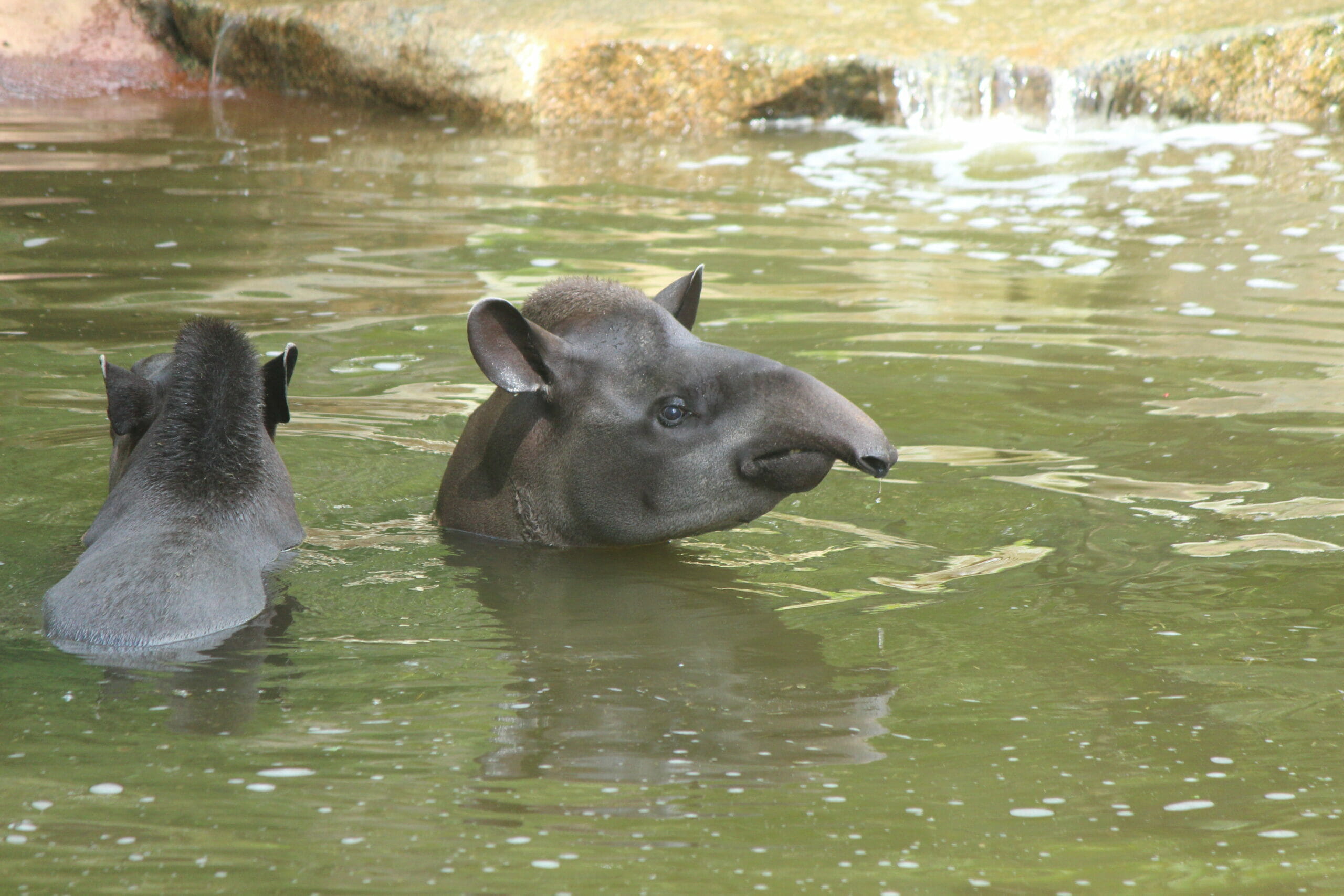
Brazilian Tapir
Tapirus terrestrisClass: Mammalia Order: Perissodactyla Family: Tapiridae
Size
Length: 6-8 ft in
Weight: 500-700 lbs
Diet
Tapirs primarily eat aquatic plants, but they will also eat other plants and fruit.
Lifespan
30 years
Habitat & Range
Rainforests near bodies of water in northern and central South America
Interesting Facts
- Brazilian tapirs, also known as lowland tapirs, are a large hoofed species from South America. They may look like a cross between a pig and an elephant, but this primitive animal is more closely related to horses and rhinos.
- They are odd-toed ungulates, meaning they are hoofed mammals with an odd number of toes. Tapirs have four toes on each front foot, and three toes on each back foot. Each toe has its own hoof, so in total a tapir has 14 hooves.
- A tapir’s most notable feature is its long fleshy nose. A tapir uses its flexible nose when reaching to grasp branches and leaves. They may also poke their nose out of water like a snorkel to breathe while submerged.
- Tapirs have a gestation period of about 13 months and have one baby at a time. This long pregnancy period makes it difficult for the species to repopulate in areas where they have been hunted. Baby tapirs, or calves, are born with spotted and striped coats which provide camouflage.
Conservation Status
Vulnerable
Threats
Habitat loss is one of the major threats to this species. They are also hunted for their meat, and face competition for food from livestock. Due to their long gestation periods and slow reproduction rates, it is very difficult for tapirs to repopulate in the wild.
